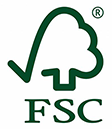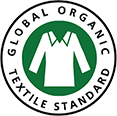Best Furniture Options
The best furniture options are made from materials like cotton, wool and latex foam; are organically produced, if possible; and are made from solid wood finished with certified low-VOC products. Look for the following certifications:
FSC certification
FSC requires that the wood used to make furniture comes from responsibly managed forests.
GOTS, the Global Organic Textile Standard
GOTS requires that at least 70 percent of upholstery materials are certified organic. This standard generally prohibits the use of harmful treatments like chemical flame retardants and PFCs, as well as numerous other hazardous substances.
GOLS, the Global Organic Latex Standard
GOLS certification requires low emission of VOCs and formaldehyde from foam, and bans the use of some chemical flame retardants, colorants and allergenic dyes.
Oeko-Tex Standard 100
Oeko-Tex Standard 100 certification requires low emission of VOCs and formaldehyde from foam, and bans the use of some chemical flame retardants, colorants and allergenic dyes.
Greenguard Gold
Greenguard Gold certification requires that the finished product meets low emission standards for VOCs, including formaldehyde.




